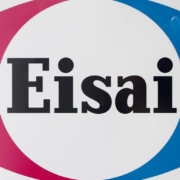Healthcare Agency Roundtable 2023: A look ahead in market access
Healthcare Agency Roundtable 2023: A look ahead in market access
By Maria Fontanazza • [email protected]
What market access trends will you be watching in the coming year?
Curtis Wander, Partner, Director of Content Strategy, Peregrine Market Access: We will be watching the implications of the Inflation Reduction Act (IRA) as they relate not only to Medicare Part D business but to the commercial space as well. The impending changes to the Part D benefit structure, coupled with the CMS negotiation of top spend brand therapies, may pave the way for commercial books to reevaluate management approaches. With the removal of the coverage gap and drastic changes to plan drug cost responsibility in the catastrophic threshold, we will be examining how payers approach their Part D formularies to mitigate the potential impact these higher plan costs will have. Tighter management, more restrictive formularies, and a larger push toward lower-cost therapies are all options that payers may consider. With these approaches, there is the potential for similar movement in commercial offerings as payers look to reduce risk. As CMS negotiations continue for the top spend therapies, payers will gain insight into both where their current rebates are positioned and what others in the competitive class are doing. Additionally, there will be a public baseline for what CMS has negotiated and that may well be used in the commercial space. How payers manage all competitors — not just the top spend therapies — is one trend that we will be watching closely in the coming year.
Kartin Sood, VP, Fingerpaint Market Access: Cost reduction initiatives and business expansion: There is active effort by industry stakeholders to reduce healthcare costs while simultaneously facing increased pressure to grow their businesses. This dual focus is driving a transformative shift across the industry.
- Payer power through integration: The payers are strategically pursuing membership and revenue growth and achieving it through vertical and horizontal integration. This not only expands their market presence, but also amplifies their negotiating power.
- Enhanced member retention and partnership building: Payers are actively seeking to retain members by enhancing customer experiences and introducing new service offerings, which includes creating broader platforms for partnerships with special emphasis on investments in women’s health and mental health.
- Rise of consumer-centric care delivery: The healthcare sector is witnessing a growing trend toward consumerism, supporting the emergence of new business entities and innovative care delivery models. One noteworthy aspect is the increasing adoption of home care, which offers convenient and patient-centric healthcare delivery.
- Accelerated transformation through emerging technologies: The successful adoption of emerging technologies such as artificial intelligence, machine learning, and digital therapeutics holds the potential to accelerate transformational efforts in the healthcare industry, enabling more efficient and effective healthcare solutions.
Casey McCann, Executive Director, Value, Access, and Reimbursement, Klick Health: Increasing value while improving outcomes. In the healthcare industry, there is an ever-increasing focus on demonstrating value and outcomes to all stakeholders, especially payers and other organizational customers. Biopharmaceutical companies face growing pressure to prove their therapeutics improve health and reduce costs through clinical and real-world evidence (RWE). In fact, 90 percent of payers have indicated that they now look for observational RWE when making formulary decisions. At Klick, we advise all of our clients to put into place a solid health economics and outcomes research plan three to five years prior to launch, and to incorporate all evidence of the value proposition of a drug throughout a product’s life cycle. The integration of evidence and outcomes data–including clinical, patient-reported, real-world, and economic–is the key to delivering a compelling and holistic value story. In this way, our clients can ensure coverage and reimbursement criteria accurately reflect the labeled indication and optimal place in treatment. They will also be ready with meaningful endpoints that can be consistently measured and compared across patient populations then used in performance-based contracting when appropriate. Preparing for this is especially important, as the industry continues to move from volume to value and with the emergence of precision medicine and personalized care.
Andrew Gottfried, CEO, Entrée Health: As a biopharmaceutical industry, we’re on the cusp of curative or nearly curative therapies for things that were once a death sentence. CAR-T in oncology and gene therapy in rare diseases are just the beginning; we’re starting to see these kinds of advances in chronic diseases like diabetes. Figuring out how to get therapies like this paid for will require a radical reimagining of the business model for health plans, physicians, IDNs, hospitals, and more. Market access will be central to that conversation. Relatedly, many of these new therapies require specialized handling and distribution mechanisms. How do we make sure that the product is where it needs to be when it is needed by any particular patient? That’s also a market access question, and I’m excited by the role we can play in helping get these life-changing products into patients’ hands, where they can do the most good.
There’s been a lot of buzz around health equity, but it’s not always obvious where improvements are being made. We often hear from clients that diversity, equity, and inclusion initiatives are a top priority for them; however, benefits to patients can be hard to identify and quantify, and it can be tough to demonstrate a return on investment. What we really don’t want to happen is for the struggles in moving the needle in health equity to deter manufacturers from continuing to invest resources in this space. 2024 could see a doubling down on health equity efforts, or worst case, a redirection of resources into more quickly quantifiable investments.
We expect AI and data to continue to be a force to be reckoned with. In market access, understanding your audience is everything, and AI and data are effective and efficient ways to gain that insight. At the end of the day, stakeholders, including prescribers, patients, and payers, are people first, and today, we have the ability to understand what matters most to each of these groups as individuals. (Gottfried expands on his insights in “‘Perfect storm’ shines spotlight on market access“.)
Raymond Johnson, Senior VP, Market Access Strategy, Ogilvy Health: With the impending presidential and legislative elections in 2024, in addition to the IRA, it will be interesting to see how the potential change of administration impacts Medicaid premiums and cost-sharing requirements. There is a range of variability across states regarding eligibility for Medicaid benefits, as well as requirements for income, cost sharing, etc. The ACA included provisions for the expansion of Medicaid coverage, either by State Plan authority or through Section 1115 Waivers. Subsequently, “in a departure from previous administrations, the Trump Administration encouraged and approved Section 1115 waivers that conditioned Medicaid coverage on meeting work and reporting requirements in 13 states.” Rather than further the objectives of Medicaid as federal law requires, these proposals undermine Medicaid’s goals by making it harder for patients to obtain and maintain coverage; thereby, reducing access to care. With the numerous challenges with, and disparities in, the delivery of healthcare – the question remains as to what the next administration will do to truly help to level the playing field for those who are covered by Medicare and Medicaid.
Jacob Harrison, Director, Ecommerce Investment Strategy, CMI Media Group: Improvement in adherence. Many of the organizations I work with are looking for ways to improve the subscribe and save model in traditional CPG to meet the needs of patients looking to adhere to the prescriptions from their doctors. The second, affordability. The ability to bring prescriptions to the patient at a transparent, affordable cost through manufacturer discount or retail pharmacy discount. Finally, the ability to generate awareness. Opening the door to pharma advertising wide and allowing people to know the options that are out there to treat their disease state.
Daniel Winter, VP, Product Strategy, CMI Media Group: Amplify the knowledge and access to the preventive healthcare and drugs will come in the next year. There are many technologies already available that help us to improve our health condition, while tests using AI to predict future conditions are developing. But still there is too much information already available for patients and healthcare professionals that it can be overwhelming. Those players that are working on creating guidance tools to navigate patients into their health journey side by side with their doctors will take some advantage.
Reta Mourad, Strategic Planning Director, Mosaic Group, an IPG Health Company: This past year has seen significant changes in a rapidly evolving market access landscape, and we can only expect 2024 to be another noteworthy year. With an increasingly heightened focus on drug pricing, pharmacy benefit manager (PBM) transparency, and the passing of the Inflation Reduction Act (IRA), we anticipate continued scrutiny and regulatory movement in addressing the growing high cost of prescription drugs in the U.S. Medicare Part D benefit redesign, a provision of the IRA, will unfold beginning in 2024 offering some financial reprieve for Medicare beneficiaries but resulting in additional implications to other market access stakeholders, primarily US payers and manufacturers.
Specialty and rare disease drugs will continue to dominate the 2024 pipeline as we look towards significant scientific advancement and drug approvals in key therapeutic areas such as oncology, Alzheimer’s Disease, obesity, and non-alcoholic steatohepatitis (NASH). Payers and health systems will continue to be increasingly vigilant in monitoring the pipeline, assessing new drug and indication approvals for coverage, and seeking unique utilization management opportunities. In light of recent copay accumulator legislation and patient affordability concerns, payers and manufacturers will continue to play opposing sides in the rise of payer-implemented programs designed to mitigate costs, as we see with the growth of alternative funding programs. Finally, the biosimilar landscape will be of key interest as legislation has recently been introduced to remove switch study requirements and potentially minimize the role of interchangeability in the U.S. biosimilar market. 2024 will likely have additional surprises, but in the meantime, we look forward to an interesting and busy year in market access.
Gary Ainsworth, SVP, Managing Director, Head of Market Access, EVERSANA INTOUCH: There are the usual suspects like payer consolidation, cost pressures and the importance of value stories but to us, these two will be at the top of the “interesting to watch” list for 2024. That is, the use of generative AI and the prioritization of health equity. AI in market access will revolutionize the way we gather and synthesize economic and medical data, expedite the acquisition of clinical trials’ findings, unravel the insights of key opinion leaders (KOLs), interpret competitive drug landscapes, and assemble market insights. AI will support market access efforts to better model patient outcomes and unravel the complex relationship between pricing, reimbursement, and access of medicines. Further, pharma/biotech companies will continue to tailor their market access strategies locally to maximize patient outcomes and drive commercial value. Personalized healthcare plans, driven by AI and fueled by integrated data streams from claims, electronic health records (EHR), and social determinants, are set to be the new norm.
Health equity in market access is also being prioritized due to studies that have confirmed access disparities based on geography and race. As a result, pharma companies are reassessing their approach to market access and reorienting around social determinants of health, patient support programs, and comprehensive patient journeys with a focus on socially and economically disenfranchised. There’s also a growing recognition of the importance of engaging meaningfully with key stakeholders and grasping the diverse perspectives on value. Through a concerted effort to address health equity by fostering close collaborations with payers, companies can play a pivotal role in shaping a more equitable and efficient healthcare system.
Mary Rose Burnham, Ph.D., Executive VP, Strategy Lead, Brand, and Medical, Greater Than One: The Medicare drug pricing negotiations. Among other things, the Inflation Reduction Act authorized Medicare to negotiate directly with drug manufacturers to lower the price of certain high-cost, single-source brand-name drugs. Remarkably, this is the first time the U.S. government has ever negotiated with pharma to lower drug prices in 50+ years that CMS has been around. Ten drugs have been selected for the first round of negotiations, including the type 2 diabetes drugs Farxiga, NovoLog, Januvia, and Jardiance; cardiovascular drugs Eliquis, Xarelto, and Entresto; psoriasis and psoriatic arthritis drugs Stelara and Enbrel, and CLL drug Imbruvica. The companies impacted include Boehringer Ingelheim, J&J, Merck, Novartis, Novo Nordisk, AstraZeneca and Bristol Myers Squibb, all of which have attempted legal action against the U.S. government to avoid the negotiation process. None of the legal challenges were successful, and all of the companies involved have “reluctantly agreed” to participate. Not surprising, since companies that do not comply face heavy financial penalties and the removal of all of their drugs from Medicare formularies. The negations will start this year and extend into 2024, and are likely to have long-term and far-reaching implications, both in terms of patient access to medicines, as well as R&D investment decisions by pharmaceutical companies. Stay tuned.
Carolyn Atchison Senior VP, Value Builders Consulting: In our view, market access trends to immediately watch for come out of anticipated IRA implications, government demands, product value demonstration and assessment, and innovate technologies. To help maintain their revenues, it is anticipated that some payers may continue to implement, where possible, even greater formulary management measures in terms of utilization management and product exclusions, especially for “expensive” specialty products. Some commercial payers may also increase their contracting demands with drug manufacturers to help offset potential lost revenues from IRA implications on the Medicare side of the business. Additionally, greater financial burden for commercially insured patients may occur in the form of increased premiums, deductibles, and out-of-pocket costs. As a result, drug manufacturer patient support programs may grow even more in their importance to help patients. CMS is also asking payers to place an increased focus on social determinants of health to manage perceived healthcare disparities. This focus may require implementation of new programs and potential partnership opportunities for some drug manufacturers.
Value demonstration for payers will continue to be important and some payers may increase their reliance on more formalized drug review assessment technologies, including such areas as cost-effectiveness and evidence of cost offsets, to aid in their clinical and financial evaluation of new drugs. Although not always viewed positively by drug manufacturers, such formalized assessments could help some drug manufacturers better publicly defend their pricing strategies that have come under increased scrutiny and negative public opinion in recent years.
In the years to come, what will be the anticipated influence that innovative technologies have on market access? Will the now utilized AI in R&D have impacts that spill over into market access? And will that potential impact be positive or negative? They’re currently being used to speed up drug discovery and to identify stronger product targets earlier. Will such technologies result in an influx of new products for payers, causing them financial stress and/or requiring them to evolve their appraisal processes? Or will these new products be favorably viewed due to potential superior clinical and safety data, differentiation, and value? Time will tell.
Tim Wright, Global President, Policy, Access, Value, Evidence, Avalere Health: Harnessing the power of real-world evidence (RWE). RWE continues to evolve at pace and in 2024 we expect to see further advancement in the field. The COVID-19 experience illustrated the way in which evidence from outside the clinical trial environment enhances decision-making. The refinement of identifying eligible patient populations and accurate quantification of benefit-risk profiles for patients with comorbid conditions have long been heralded as benefits of RWE. The policy shifts from the FDA, European Medicines Agency (EMA), and Medicines and Healthcare products Regulatory Agency (MHRA) over the past few years illustrate the value of RWE analysis in supporting traditional datasets. The evolution also highlights the continuing need for methodological guidance to ensure quality data in manufacturer submissions. We have noted the increasing willingness of regulatory authorities to engage early with industry to explore how RWE can enhance decision-making, as demonstrated by the FDA’s Advancing Real-World Evidence Program. While these developments will inevitably take time to run through the regulatory system, more agile decision-makers, including payers, have routinely used RWE, and it is with these stakeholders that we anticipate exciting developments.
In addition, digital health technologies including wearables, mobile applications, platforms, and telehealth will provide a spectrum of new datasets; while hugely useful, these technologies pose questions of endpoint validation, interpretation, alignment, and interpretation, which will continue to evolve and be solved. However, challenges remain, with interoperability between patient data sources and electronic health records presenting a major challenge in the standardization and quality of the data. Understanding and applying the right inputs to data collection and patient engagement strategies are key to maximizing RWE for driving differentiation, supporting a product’s value, demonstrating effectiveness, and expanding its evidence base.
Sarah Alwardt, US President, Policy Access, Value, Evidence, Avalere Health: Market access challenges in rare diseases. One of the major trends that is impacting market access is the increasing manufacturer interest in rare disease, even among companies that have historically focused on more traditional therapeutic areas. Rare disease requires a completely different perspective on access, from educating patients to reaching providers, to marketing. All that shifts when the patient population is significantly smaller. In clinical trials, manufacturers will need to apply omnichannel tools to reach enough patients and meet the specific criteria for trial participation. This is where incorporating health economics and outcomes research (HEOR) data can help avoid issues, such as insufficient understanding of value and payer issues. Additionally, we’ll be watching for the market’s response to drug shortages. Plans and physicians are finding workarounds and other options for patients. But how will that impact competition when the shortage is over, and will people switch back to the original product when it becomes available again?
Milena Sullivan, Managing Director, Avalere (part of Avalere Health): Over a year into the implementation of the IRA, the market is feeling the effects of the most significant provisions. Medicare Part D plan offerings, premiums, and formularies for 2024 already show signs of payer response to new financial pressures stemming from the law. At the same time, CMS is beginning Medicare negotiation meetings with selected manufacturers and holding patient-listening sessions. Negotiation will have ripple effects across therapeutic markets, requiring manufacturers to reassess strategies now to stay ahead of the changing drug landscape.Manufacturers should also consider how Medicare negotiation may interact with state efforts to set new upper payment limits (UPLs). Some products will be negotiated by CMS and reviewed at the state level at the same time, while others may be subject to a UPL ahead of Medicare selection. There are cascading implications for pricing and value demonstration that raise new risks, even for drugs that are exempt from negotiation.
Healthcare Agency Roundtable 2023: Pressing issues in the election year (Part I)
Healthcare Agency Roundtable 2023: Representation in healthcare marketing (Part II)
Healthcare Agency Roundtable 2023: Artificial intelligence for the foreseeable future (Part III)
Healthcare Agency Roundtable 2023: Cutting through the social noise (Part IV)
Healthcare Agency Roundtable 2023: Moving into 2024 (Part VI)
| Maria Fontanazza is the director of content, Med Ad News and PharmaLive.com. |


























